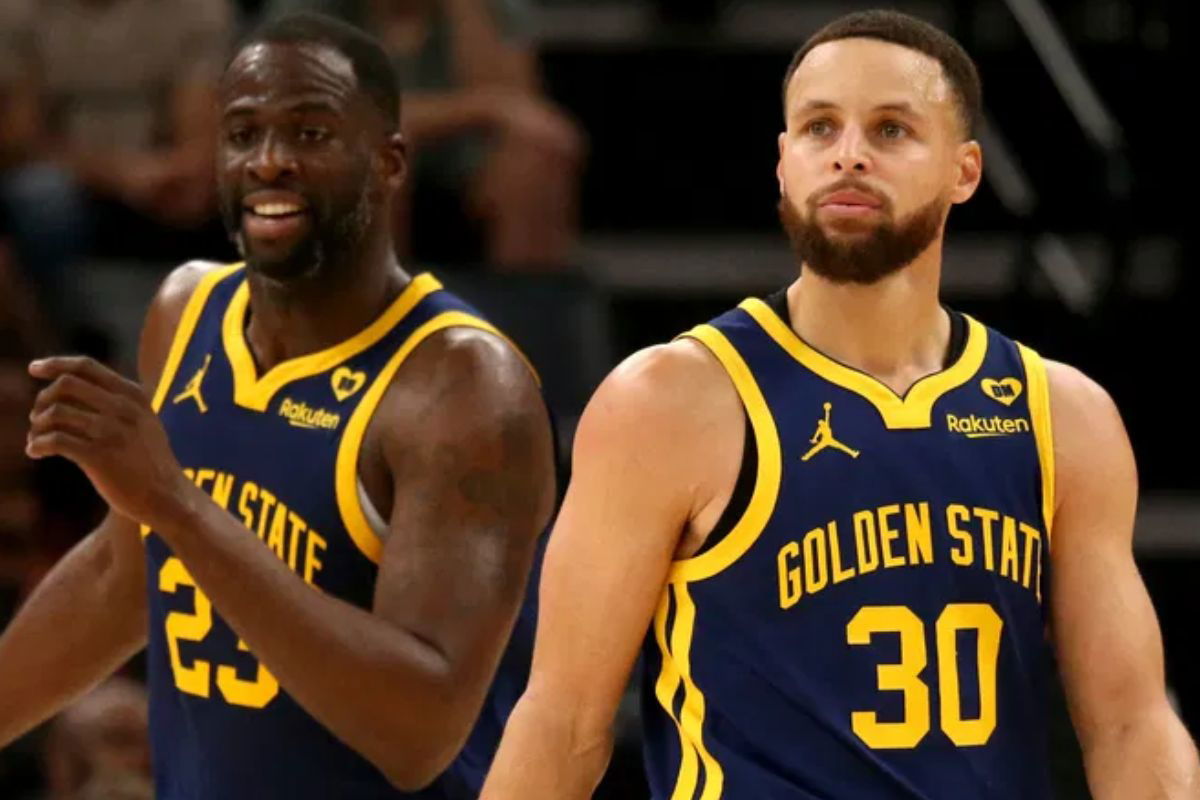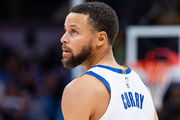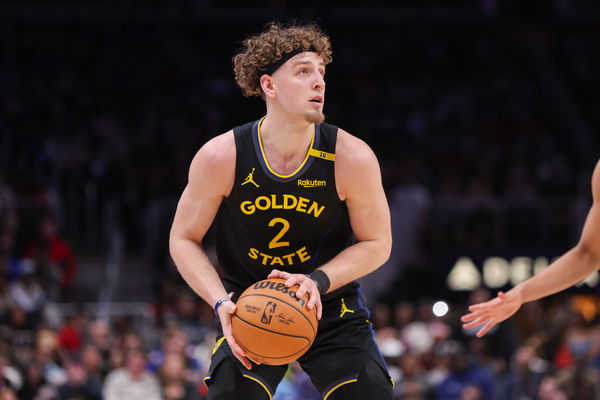
Imago
Draymond Green, Stephen Curry

Imago
Draymond Green, Stephen Curry
In a postseason defined by unpredictability and the unfortunate absence of superstars, Game 3 between the Golden State Warriors and Minnesota Timberwolves was already an outlier. No Stephen Curry. A surging Timberwolves squad. A Warriors team supposedly outmatched and outgunned.
Watch What’s Trending Now!
And yet, as halftime struck at the Chase Center, the scoreboard told a different story. Golden State led 42-40. It was the kind of halftime lead that prompts fans to double-check their screens—not because the Warriors were ahead, but because of how they were ahead. They hadn’t made a single 3-pointer.
Not one.
ADVERTISEMENT
In an NBA where three-point shooting is gospel—especially for the Warriors, the franchise that revolutionized the shot—the stat felt sacrilegious. Golden State finished the first half 0-for-5 from beyond the arc. And still, they were in control.
Warriors are first team to lead a playoff game at halftime despite making 0 3s since the Cavs in Game 3 vs Raptors in 2017
— Josh Dubow (@JoshDubowAP) May 11, 2025
Only once in the past eight years has a team led at halftime of a playoff game without a made 3-pointer: the 2017 Cleveland Cavaliers, in Game 3 against the Toronto Raptors. That’s how rare this is. That’s how absurd this is. That’s nearly eight years of explosive, perimeter-heavy basketball without a single team pulling off what Golden State just did. And it wasn’t even their first historical footnote of the week.
ADVERTISEMENT
Just a few nights ago, in Game 2’s lopsided loss, Golden State became the first team since 1998 to play 14 different players in the first half of a playoff game. With Curry out, Steve Kerr turned Game 2 into a science lab—rotating through personnel, fiddling with pace, and preserving Jimmy Butler and Draymond Green’s legs in a game they never really chased. It ended in a 117-93 rout by Minnesota.
But it also revealed something: Trayce Jackson-Davis could hang. Kuminga had some gas in the tank. And the Warriors, even in chaos, weren’t quitting. “The domino effect of Steph being out led to Trayce playing tonight,” Kerr said. “Because we need the scoring. We need the finishing. You saw what he did out there.”
ADVERTISEMENT
Which brings us to Game 3. The Chase Center crowd was hungry. The energy was wild. And what they got wasn’t vintage Warriors—it was something more primal. More human.
Butler and Kuminga carried the scoring load with 30 of the team’s 42 first-half points, attacking Rudy Gobert and forcing the issue in the paint. It wasn’t pretty. It wasn’t planned. But it was working. Minnesota, meanwhile, was self-destructing—Anthony Edwards shooting 3-for-12, Julius Randle cold, and the team closing the half with nine consecutive missed shots.
What makes this stretch so riveting isn’t just the Warriors’ defiance of basketball logic—it’s their willingness to win ugly. No threes? No problem. No Steph? Next man up. Game 1 was Buddy Hield’s flamethrower performance. Game 3 is about absorbing the Timberwolves’ length and aggression and dragging them into a mud fight.
ADVERTISEMENT
There’s poetry in how Kerr and the Warriors are finding a way to win through this—less with tactics, more with feel. Every possession matters. Every stop buys the team more time. Every dunk by Jackson-Davis, every backdoor cut by Butler, is another inch closer to extending this series to Game 6.
And if they do? If they somehow steal another game at Chase and get Curry back in time for the home stretch—then what began as desperation might become one of the most improbable turnarounds we’ve seen from a team with rings already in the vault. However, the odds for GSW are not looking good.
ADVERTISEMENT
What’s next? A future defined by near misses
The Warriors didn’t just lose Game 3—they missed a moment. A chance to rewrite the script. A chance to turn improbable history into an emotional heist. Up at halftime despite making zero threes. Holding Minnesota under 35% shooting. Giving everything without Stephen Curry. And still, it ended 97–102.
That loss cuts deeper than the scoreline. Because it was winnable. Because the blueprint was working. And because in a series where every game without Curry is survival mode, this one felt like a getaway that stalled before escape.
Top Stories
Calls Mount Against NBA Refs After Stephen Curry Wrongfully Punished vs Timberwolves

Lakers’ Gabe Vincent Dishes on LeBron James, Luka Doncic’s Sacrifices, Role on the Team and More (Exclusive)

Lakers Champ Isaiah Rider Breaks Silence On Arrest For Order Violation

Caitlin Clark, JuJu Watkins Announce Injury Update After Months of Battle

Arrest For Shaquille O’Neal’s Stolen Range Rover Made But More Bad News Awaits

Jonathan Kuminga’s resurgence was again undeniable. His athletic bursts and off-dribble aggression gave the Warriors their only consistent rim pressure. But it’s hard to ignore the backdrop: Kuminga wants more. Around the league, whispers about his eventual departure are growing louder—not because he’s not talented enough, but because Golden State may not be the long-term system for him. He’s showcasing, yes—for the Warriors, but maybe for the market too.
ADVERTISEMENT
Then there’s Trayce Jackson-Davis, who continues to make himself uncuttable. Six more rebounds. More switchable minutes. More poise than anyone expected. Every game he plays is altering next season’s blueprint.
And with every passing possession, so is the front office’s thinking.
Gone are the assumptions that Butler alone could carry them deep. Game 3 made that clear. He delivered effort, defense, facilitation—but the offense missed a closing gear. And that brings us to the conversations no one wants to say out loud: Does this group, even when whole, have the upside anymore?
ADVERTISEMENT
That’s why Giannis Antetokounmpo’s name is back in the room. Not as fantasy, but as direction. The idea: package Butler and picks for the kind of generational force who could extend Curry’s window. It’s ambitious, expensive, and borderline implausible. But these are the calculations desperation demands.
Especially when the present offers only thin margins—and thinner margins of error.

Imago
Mar 22, 2025; Atlanta, Georgia, USA; Golden State Warriors guard Brandin Podziemski (2) shoots against the Atlanta Hawks in the third quarter at State Farm Arena. Mandatory Credit: Brett Davis-Imagn Images
Buddy Hield, for all his shooting in Game 1, cooled off again. Brandin Podziemski and Moses Moody still can’t string together dependable scoring. And the Timberwolves are starting to remember who the one-seed is supposed to be.
ADVERTISEMENT
That’s what makes Game 3’s loss doubly bitter: it was the blueprint game. Dirty defense. Paint attacks. Turnovers forced. Minnesota thrown off rhythm. And yet… the shooting never arrived. The breaks didn’t come. The spirit outpaced the shot-making.
There’s nobility in that. But there’s no reward.
What’s left now is a series tipping toward the brink and a summer already looming in the rearview. Game 4 becomes something more than a contest—it’s a referendum. On Kuminga’s place. On Butler’s ceiling. On whether this team still has enough internal gravity to orbit Steph Curry and pull off one last run.
Golden State didn’t just lose Game 3. It gave the front office one more reason to explore a future that may not include half the roster we’re seeing now.
For now, the Warriors fight on. But everything they do is also a signal—to their fans, to the market, to themselves.
The dynasty era is already etched in banners. What comes next? That’s being written, quarter by quarter, in losses like this.
ADVERTISEMENT
ADVERTISEMENT
ADVERTISEMENT

